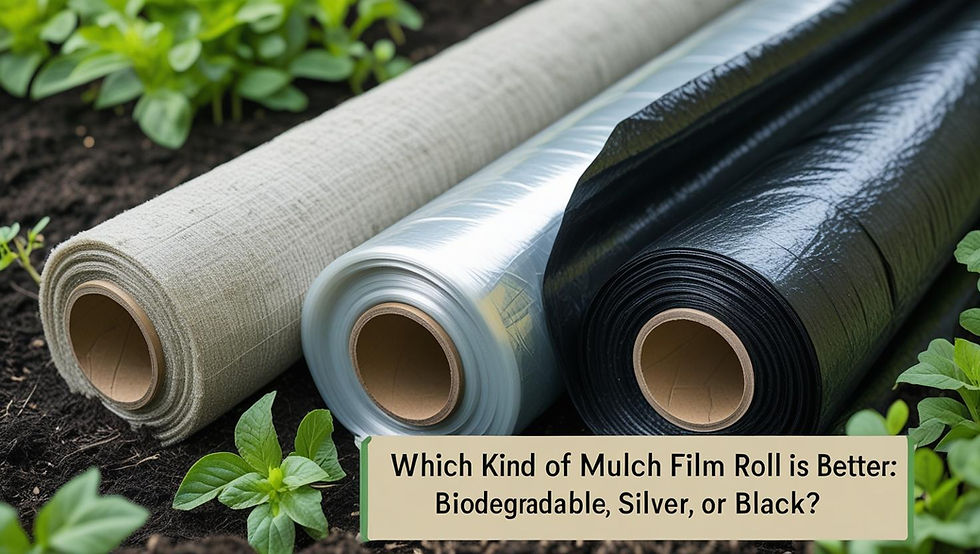How Do Mono-Layer and Multi-Layer Flexible Packaging Laminates Differ From One Another?
- Rahul Solanki
- Jul 1
- 4 min read
Introduction

Flexible packaging laminates are essential in today's packaging industry for maintaining freshness, guaranteeing durability, and improving shelf appeal. It's critical to distinguish between mono-layer and multi-layer flexible packaging laminates as companies continue to look for more sustainable and efficient packaging options. It's also critical to emphasise that flexible packaging laminates are engineered solutions created for a variety of applications in the food, pharmaceutical, and industrial sectors. Although both single-layer and multi-layer flexible packaging laminates have valuable uses, their composition, affordability, functionality, and sustainability differ greatly.
These cutting-edge laminates help industries like food packaging by extending product shelf life, guaranteeing freshness, and avoiding contamination. Businesses like Tilak Poly pack have made significant contributions to the innovation of both forms by creating customised packaging structures to satisfy specific customer demands. Let's examine the main distinctions between mono-layer and multi-layer laminates, their performance in different applications, and factors to take into account when selecting the best kind.
What Are Flexible Packaging Laminates?
Basic Definition
Combinations of two or more layers of materials, such as plastics, paper, foil, or bio-based films, that have been bonded together to create a flexible, protective structure are known as flexible packaging laminates. The purposes of these laminates are:
Preserving product freshness
Enhancing visual appeal
Offering protection against external contaminants
Primary Components
Barrier Layer: Typically aluminum foil or metallized film
Sealant Layer: Commonly polyethylene
Print Layer: Often BOPP or PET for graphics
Mono-Layer Flexible Packaging Laminates
Structure and Materials
Mono-layer laminates consist of a single material layer usually polyethylene (PE), polypropylene (PP), or polyester (PET).
Key Characteristics
Lightweight and economical
Suitable for short shelf-life products
Less complex to recycle
Common Applications
Bread and bakery wraps
Basic dry snack pouches
Inner linings for boxed foods
Advantages
Cost-effective production
Simpler disposal and recyclability
Faster manufacturing process
Multi-Layer Flexible Packaging Laminates
Structure and Materials
Multi-layer laminates consist of two or more layers bonded using adhesives or extrusion coating techniques. Layers may include PE, PET, aluminum, EVOH, nylon, etc.
Key Characteristics
Superior barrier protection against moisture, oxygen, and light
Tailored for long shelf-life and high-value items
Enhanced printability and shelf appeal
Common Applications
Vacuum-sealed meat packaging
Liquid pouches and retort packaging
Food packaging laminates for dairy, sauces, and ready-to-eat meals
Advantages
Extended shelf life
High mechanical strength
Customization for specific industry needs
Comparing Mono-Layer and Multi-Layer Laminates
Performance
Multi-layer laminates outperform mono-layer types in barrier properties, puncture resistance, and shelf life extension.
Cost and Manufacturing
Mono-layer laminates are cheaper and faster to produce, but may not meet the barrier or branding needs of premium products.
Recyclability
Mono-layer: Easier to recycle, especially when made of a single plastic type
Multi-layer: Difficult to recycle due to the fusion of dissimilar materials
Application Fit
Mono-layer: Ideal for low-risk, dry, or short-shelf-life items
Multi-layer: Better suited for moisture-sensitive, high-fat, or export products
Role of Food Packaging Laminates
Shelf Life Enhancement
Food packaging laminates in multi-layer form help extend shelf life by blocking air, moisture, and contaminants.
Visual Appeal and Brand Identity
Laminates offer high-quality printing surfaces that help brands stand out on shelves.
Packaging Versatility
They can be formed into pouches, sachets, lids, and roll stock for automated lines.
Innovations by Tilak Polypack
Expertise Across Both Laminates
With solutions designed for particular industries like food, pharmaceutical, and hygiene, Tilak Poly pack specialises in offering flexible packaging laminates in both mono-layer and multi-layer configurations.
Custom Formulations
They create laminates that strike the right balance between functionality, cost, and sustainability.
Sustainability Initiatives
To lessen its impact on the environment, Tilak Polypack also makes investments in packaging formats that are recyclable and compostable.
Environmental Considerations
Circular Economy Goals
With increasing focus on sustainability, companies are leaning toward mono-material multi-layer laminates that improve recyclability without sacrificing barrier performance.
Certifications and Standards
Top manufacturers ensure compliance with:
FDA and EU food contact regulations
ISO certifications
Eco-label certifications
Choosing the Right Laminate for Your Product
Key Factors to Consider
Product type (dry vs. liquid)
Required shelf life
Export vs. local market
Packaging budget
Consultation with Experts
Engaging with companies like Tilak Poly pack ensures that the laminate selected meets your product’s unique requirements.
Final Thoughts
Optimising your packaging strategy requires an understanding of the distinctions between mono-layer and multi-layer flexible packaging laminates. Multi-layer structures offer better protection for more demanding applications, while mono-layer films provide affordable, recyclable solutions.Finding the ideal balance between sustainability, performance, and aesthetics is crucial in markets like food packaging laminates. Businesses can make well-informed decisions that support their brand and product objectives with the assistance of seasoned suppliers like Tilak Poly pack.
FAQs
Which is better for export products mono-layer or multi-layer laminates?
Because of their superior durability and barrier protection, multi-layer flexible packaging laminates are typically a better fit for export products.
Can food packaging laminates be made fully recyclable?
Yes, food packaging laminates can now be both recyclable and functional thanks to developments in mono-material laminates.
Does Tilak Poly pack offer biodegradable laminate solutions?
Yes, Tilak Poly pack offers both biodegradable and recyclable solutions tailored to food, pharma, and industrial sectors.
Are mono-layer laminates suitable for liquid packaging?
Usually not. Because of their improved seal integrity and resistance to leaks, multi-layer laminates are preferable for liquid products.
What is the most sustainable laminate option available today?
Multi-layer flexible packaging laminates made of a single material provide a good mix of performance and recyclability.



Comments